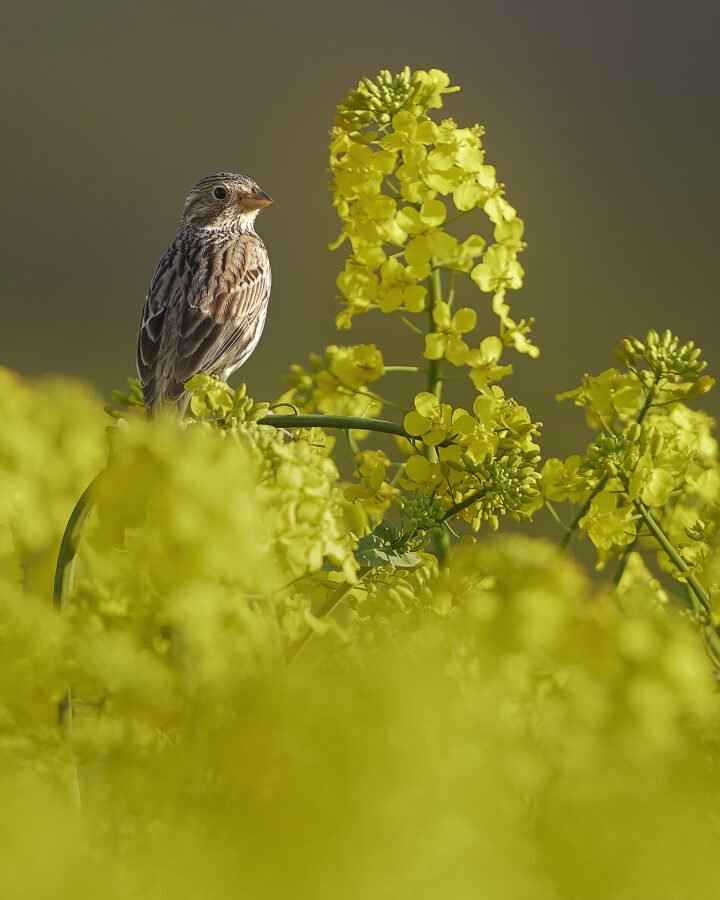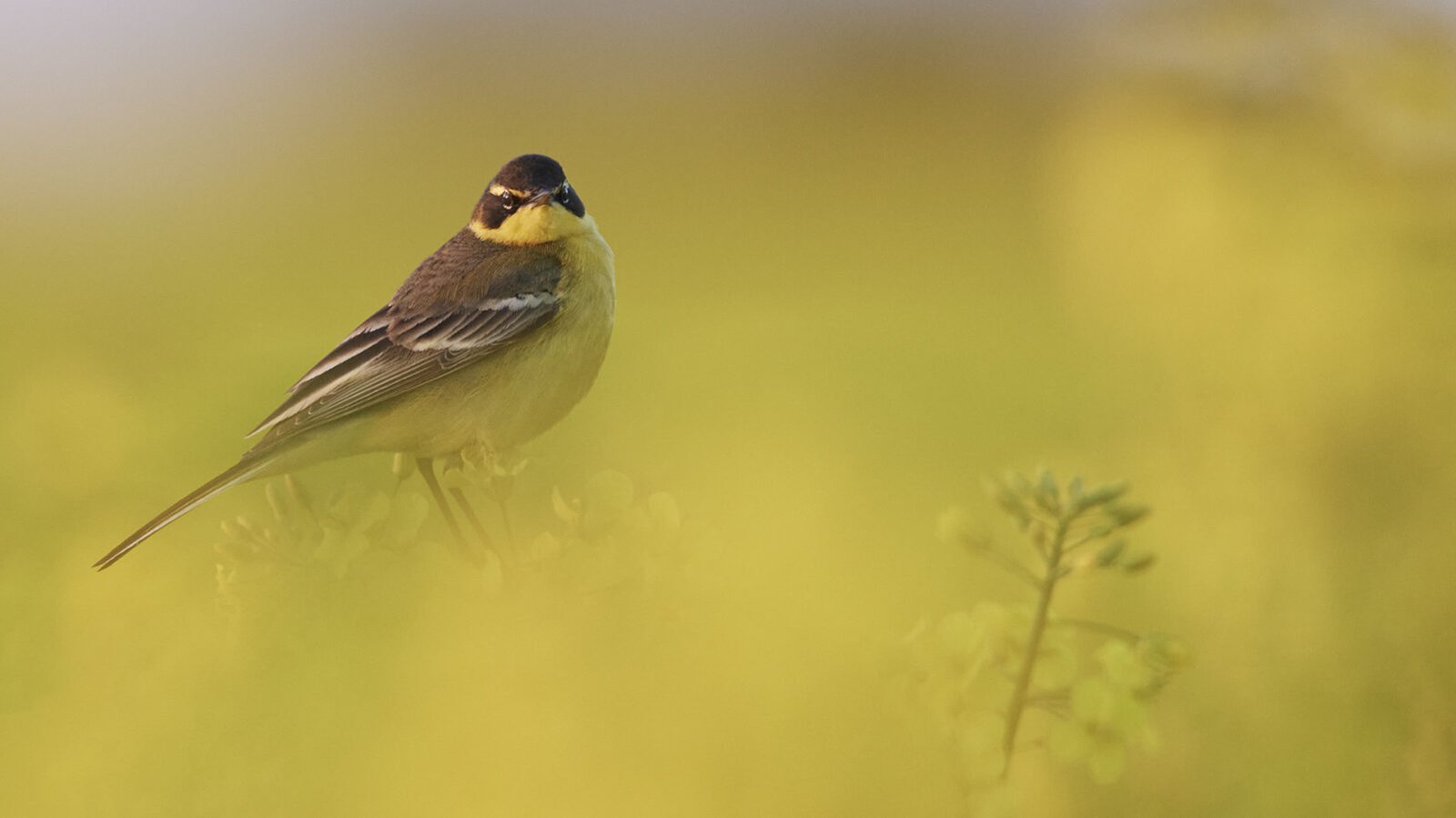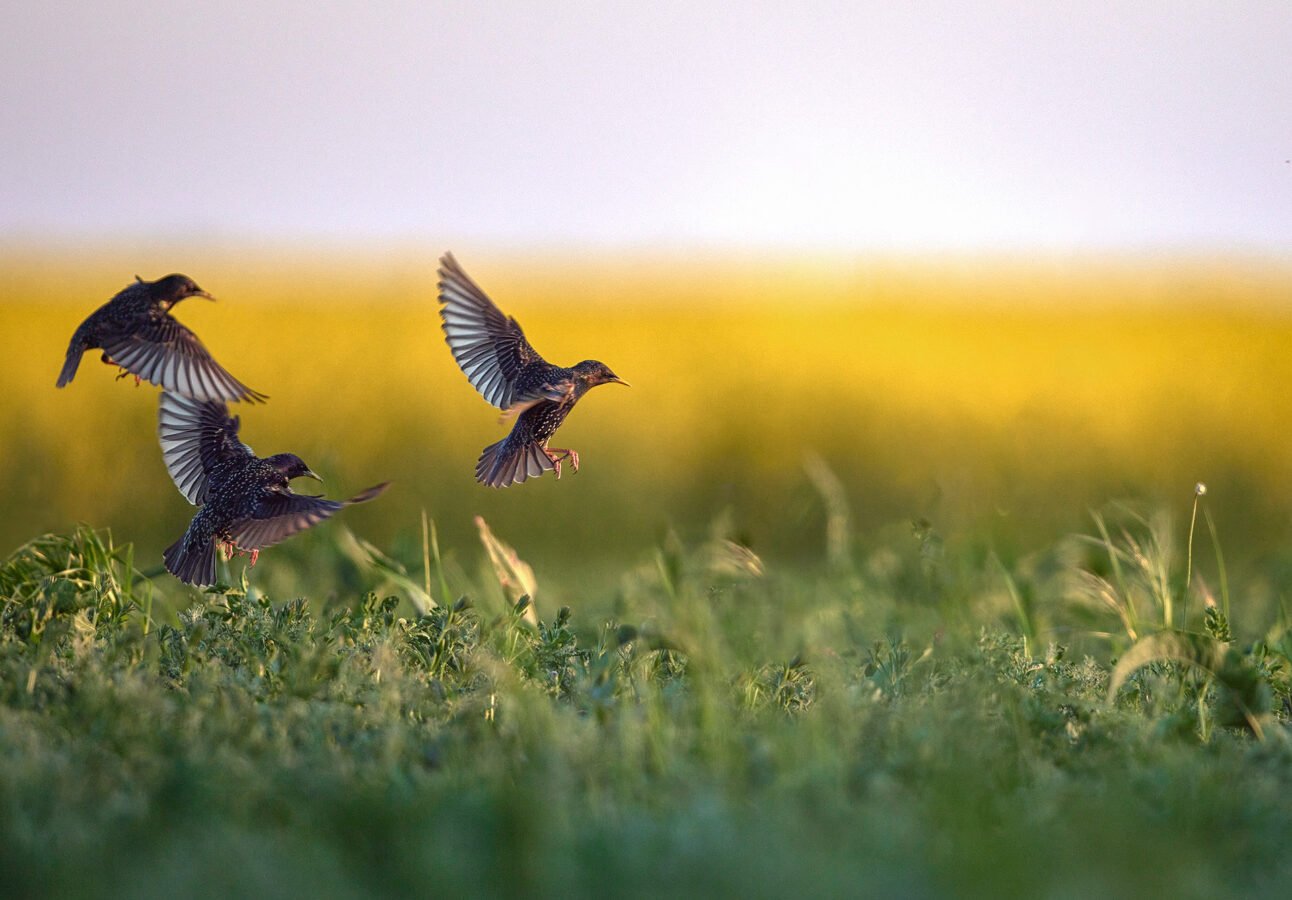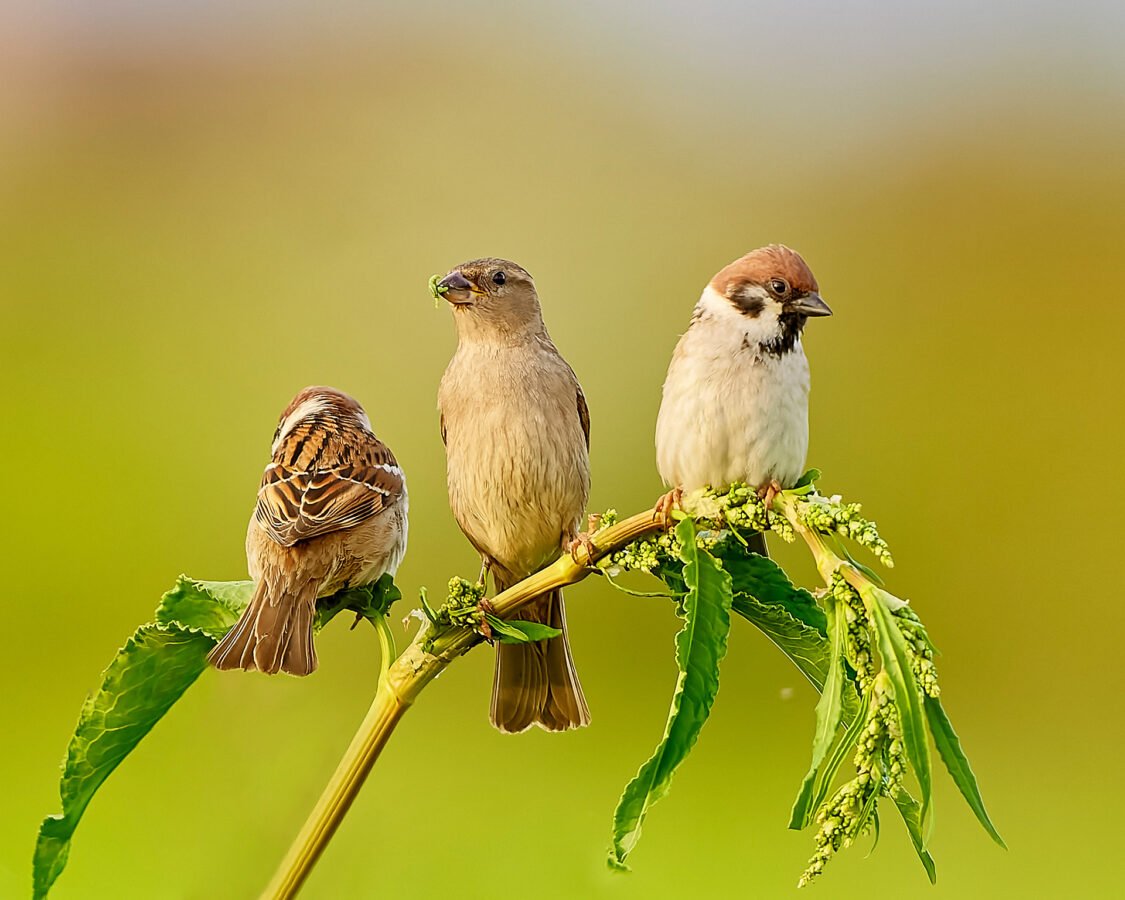Until quite recently, I thought rapeseed could be used only in two possible ways: as an ingredient for oil production and, even more frequently, as a photo studio for those who adore being photographed surrounded by it, on the fields. It had never occurred to me that, at the same time, rapeseed can be the nest of countless species of birds, a true paradise of biodiversity.
I discovered this secret by chance. I was looking for deer and – since no deer wanted to be seen – I just thought I’d stick around for a little while, in my car – my observation tower – to take a closer look to the surroundings. Only that the “little while” turned into three full hours, during which I let myself captivated by all the fuss around me and the wings performing an amazing show in the light. It was only when the last ray of sunshine left the yellow field, that I was able to leave, as well. Of course, I didn’t get back home empty handed, but accompanied by two yellow wagtails and a corn bunting, on a card full of “catch”.
I came back the following day. Then the day after. And I didn’t stop until my new passion, rapeseed birdwatching was nine days old and counted as many species observed. Let’s say that the world has seen sparrows, barn swallows, starlings or magpies before. However, the larks, shrikes, wagtails, pheasants or buntings make your heart grow fonder, because you don’t see them as often. But don’t think you can find them all together; rapeseed is not a hotel! They fraternally split their territories, and settled by species and families, at the base of the flowers, where they lie hidden from the quick eyes of predators; and photographers, of course.
And now, let’s turn our attention to our most quiet models:
Presura sură | Corn Bunting | Emberiza calandra
A bird about which you could say has nothing special, that is neither colourful, nor famous for her thrills, as the lark is, to which she resembles a little. But the eyes – oh, her eyes make her unique – so big, black and as if they are decorated with small beads. They’re absolutely fascinating and you’re almost afraid to look straight at them. That’s actually her whole attitude. Confident, she looks ahead with great courage. She seats upright on the rapeseed, careful not to disturb the little yellow flowers, even when she has a heavy beak from her little haystack – the future bed of her little chicks.

Codobatura galbenă | Yellow Wagtail | Motacilla flava
Even if she was wagging her tail like a crazy thing, she posed so nicely for my photo. She turned around, showed me the tail base, the tertials – and how she is able to fly out of my face (that was most often, unfortunately). Instead, she gave me a headache when I had to identify her. As I hadn’t reached the performance to know them by their thrills, yet. Even the figure was not identical and showed all kind of variations, which made me think it could be a capped bunting, or maybe a wagtail… Oh, that’s her, I concluded, after long ornithological studies.


Graurii | Starling | Sturnus vulgaris
Cursed by farmers and loved by photographers. I’d say that’s the most appropriate description for starlings. They eat everything they can get, do huge damage, and then fly off in flocks, so no one is able to catch them. And we run after them, in the sun, when the black of their feathers acquire metallic reflections and they become only perfect to be captured in a picture. Ready – steady – go, cherry season is coming!

Sfrânciocul roșiatic | Red-backed Shrike | Lanius collurio
He was almost going to screw up my math and make me think I saw ten species instead of nine. That’s because the female and the male don’t resemble each other at all, or – as they say in specialist terms – “they present pronounced sexual dimorphism”. The “boy” is however easier to recognize, a Zorro with a black eye mask and salmon pink on his chest – the fatal combination! Their small hook-like beak is specialized for catching insects, but sometimes they just can’t get enough and move on even to lizards, rodents or birds.

Vrabia de casă & de câmp | House Sparrow & Tree Sparrow | Passer domesticus & Passer montanus
Yes, of course, we know them very well, as we see them everywhere and we are tired of their “chip-chirrup” all day long. But how many of us know that in Romania there are three species of sparrows – house sparrow, field sparrow and willow sparrow? The ones on the branch – three, Lord, and all three of them! (as George Cosbuc, the poet, would have exclaimed again, if he saw them) – are field sparrows, each with their own business. They are easily distinguished by the black spot on the cheeks, that the males ware.
With that said, I descend form my observation tower and head towards the Delta – another piece of paradise, full of life and untold stories from the world of the unspoken. Until then, when I’m not on the road, I’m online at raresbesliu.com or on instagram.com/raresbesliu.
